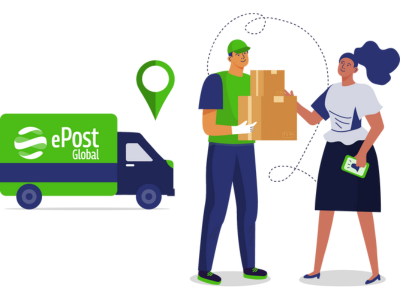As eCommerce businesses expand their shipping offerings to EU countries, there are a variety of regulations to adhere to ensure compliance. The European Union is a supranational and economic union of 27 member states covering over 4 million inhabitants. As a substantial market with unique laws and requirements, it’s essential to understand the latest EU shipping regulations to ship there compliantly.
From clearing customs to understanding the most current list of restricted items, this blog will explore the latest information you need to know when shipping to the EU to have a seamless experience.

Initial considerations when shipping to Europe
If you’re considering shipping to one of the 27 countries residing in the EU, there are a few things to know before you begin the process. For starters, the European Union is a vast supranational organization. This status means that member states of the EU delegate certain decision-making powers to shared institutions like the European Commission and the European Parliament.
The EU has also seen considerable changes in recent years like the withdrawal of the United Kingdom from the EU in 2020, also known as Brexit, leaving the remaining European Union countries like France, Italy, Greece, Cyprus, and more as sovereign nations with their own governments, legal systems, and legislative processes.
As a result, retailers must adhere to EU-wide regulations as well as individual member-specific regulations of the location they plan to target. For example, if your company is shipping goods from the United States to Ireland, your shipping procedures must comply with EU regulations and Ireland’s specific laws and requirements to ensure compliance. While most member states must follow EU legislation, certain countries have opt-out clauses or exemptions. Further, non-EU countries like Norway and Iceland are not EU member states but follow certain EU policies.
With no single market following the same regulations, it’s essential to research the corresponding rules to ensure a flawless shipping process.
Here are some other general tips to consider when shipping to the EU from the USA.
✔ Familiarize yourself with EU customs, new requirements, and specific EU-country regulations before shipping. Working with a customs broker and professional shipping team can help you determine the right laws and rules to follow.
✔ Determine the applicable customs duties, fees, and tariffs to outline your shipping costs and determine your budget. Fees also include the value-added tax (VAT) for goods imported into the EU.
✔ Obtain the proper Harmonized System (HS) code as well as other applicable codes for shipping to the EU, like an Economic Operator Registration and Identification (EORI) number.
✔ Prepare all the necessary documentation for shipping to the EU, like a commercial invoice, packing list, and country of origin certificate.
✔ Use proper packing materials to safeguard your goods during transit and check labels for accuracy.
✔ Partner with an experienced shipping provider to ensure all your paperwork is completed accurately and to determine the best course of action and shipping speed to get your items to their destination safely and on time.
✔ Select an appropriate shipping speed to ensure the timely arrival of your items. Factor in customs clearance, weather conditions, and holiday delays.
✔ Use advanced tracking capabilities to monitor the status of your shipment and ensure its timely arrival. Follow up with customers if necessary or to thank them for their business.
In addition to the above steps to ensure you have the most seamless process, it’s crucial to stay up to date on the latest EU shipping regulations and trading policies to avoid any negative implications like delays, seized packages, or returned shipments.

EU shipping regulations: What you need to know
Before eCommerce businesses set out to expand their offerings beyond local markets and into the EU, there are a few crucial details to understand. EU shipping regulations have undergone substantial changes recently that eCommerce companies need to know before shipping to this multinational organization.
Here are 5 of the latest EU shipping regulations to know heading into 2024.
1. Sellers in the U.S. Are Required to Collect VAT and Register for an IOSS Account
New EU regulations have surfaced recently, requiring eCommerce businesses to provide a Harmonized System (HS) tariff code on customs forms (CN22 and CN23) and Advance Electronic Data (AED) for all goods imported into the EU. What do these two terms mean? Let’s break it down.
HS Code: The Harmonized System code is a standardized system that uses a numerical code to classify and identify products traveling internationally. This code helps customs agents identify precisely what is being imported.
AED: Advance Electronic Data refers to the electronic information submitted to the appropriate customs authorities before goods arrive at their destination. AED includes crucial details about the contents of a shipment, like its origin and other relevant information, to enhance security and protect from illicit trade or dangerous goods entering a country’s border.
International shipments without an HS Code or detailed description of goods may be subject to shipping delays, additional fees, or risk of non-delivery.
2. Sellers in the U.S. Are Required to Collect VAT and Register for an IOSS Account
One of the latest EU innovations in effect as of July 1, 2021, is that the VAT rules on cross-border business-to-consumer (B2C) eCommerce have changed. The value-added tax, also known as VAT, is a tax assessed on the value added to goods and services. While goods of lower value used to be eligible for exemption from VAT, all goods imported into the EU are now subject to VAT.
This change affects everyone in the eCommerce supply chain, from online sellers and marketplaces both inside and outside the EU to postal operators and shipping couriers. So, if you are a seller in the U.S. looking to ship to the EU, you will now be required to collect VAT and register for an IOSS (Import One-Stop Shop) account to collect the VAT. The IOSS is designed to simplify the declaration and payment of VAT for sales imported from third countries and applies to goods with a value not exceeding €150.
3. New Air Freight Customs Regulations
All freight forwarders, air carriers, express couriers, and postal operators with shipments traveling to or through the EU, Switzerland, Norway, and Northern Ireland will now be required to follow new air freight regulations to pass customs clearance. This initiative is part of the second phase of the EU Import Control System 2 (ICS2). The ICS2 applies to all EU member states and to all goods imported into or through one of the member countries. The purpose is to expand the security and safety of shipments imported into the EU. A complete entry summary declaration (ENS), HS Codes of inbound goods, and the EU consignee’s Economic Operator Registration and/or Identification Number are required. This new customs initiative is to help agents enhance security measures and identify high-risk consignments prior to their arrival at EU external borders like air, maritime, and inland waterways.
4. Detailed Customs Declarations
The purpose of a customs declaration is to provide a detailed description of the items being shipped, but the EU has new regulations requiring further specifics of the goods listed. Items can no longer be listed in a general category but must be named specifically. For example, if you ship an appliance, the item description must list specifics such as “refrigerator” or” oven.” Correctly identifying goods improves efficiency and prevents delays and fees accrued from non-compliance.
5. Latest EU Restricted Goods
Staying knowledgeable of the most current restricted or prohibited goods applicable to your targeted destination can help eCommerce businesses avoid shipping banned items into the EU. Restricted goods are items that require additional paperwork or special permits or licenses to travel across borders, where prohibited goods are entirely forbidden from entering EU territories.
Where it gets tricky is that each nation has its own list of restricted items and regulations necessary for import. For example, Germany restricts the importation of tobacco products, firearms, ammunition, and more. Slovakia requires a Certificate of Slovak Agriculture and Alimentary Inspection for coffee and honey and special licensing for other items like military equipment, animal products, and various meats and meat products.
You can familiarize yourself with a country’s list of restricted items by viewing their official Government website or consulting with your shipping provider.
Benefits of compliant shipping
Ensuring compliance with EU regulations provides a host of benefits for eCommerce businesses. Compliant shipping,
- Improves the speed and efficiency of cross-border eCommerce shipping
- Ensures your shipments meet requirements to prevent delays
- Saves costs by avoiding fines and penalties for non-compliance
- Prevents lost items by adhering to proper coding and classification systems
- Enhances customer satisfaction with smooth and swift delivery services without delays
International trade is complex, but by following the proper regulations, your eCommerce business can find success in the complicated realm of shipping to the EU.

Ship to the EU with ePost Global
Ensuring compliance with EU shipping regulations is complicated. But when you work with ePost Global, we make it simple. We offer comprehensive customs management services to ensure your business complies with all EU customs requirements and restrictions every time. Our team of knowledgeable experts is dedicated to helping you navigate the customs process with ease and accuracy, ensuring that all required documents are completed with the utmost precision.
How do we do this? We provide a comprehensive file including Harmonized Standard Codes, a detailed description of the shipped items, and their corresponding values. This attention to detail ensures that the necessary information is readily available for EU customs agents and is properly completed to expedite the process. Once we receive the required information, our team takes care of all the paperwork and creates all the necessary labels for customs. If we need any additional information, we’ll reach out to ensure we cover every detail. Whether you’re shipping to the Netherlands, Spain, or beyond, we’re here to help you navigate every step of the process to guarantee the smooth and safe transit of your goods.
To ensure a seamless cross-border delivery experience, it’s essential to understand the necessary shipping regulations to ensure compliance and to help your business make informed decisions. By teaming up with an experienced international provider like ePost Global, you can simplify the process, improve the accuracy of your operations, and elevate the customer experience for your business.
Following EU shipping regulations and leveraging accessible resources will empower your business to tap into a new market of consumers, presenting new opportunities for growth and success in the international e-commerce landscape.
If you’re ready to ship to the EU with confidence, contact us. We’re happy to help you get started.




